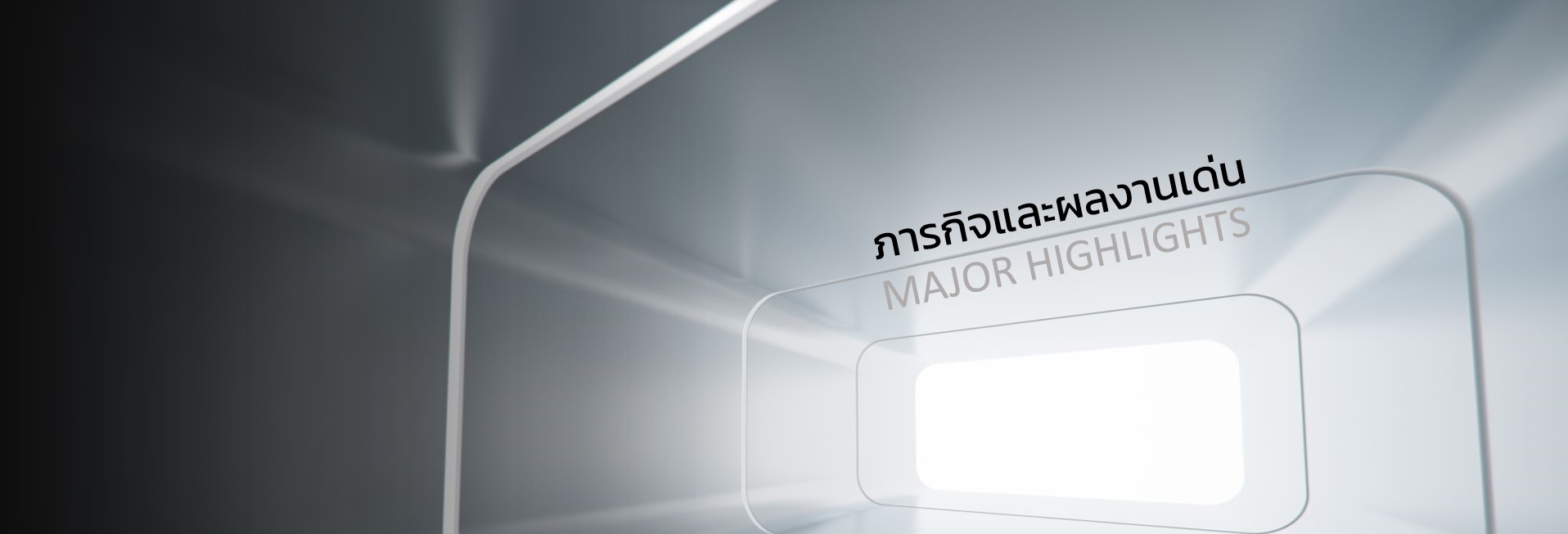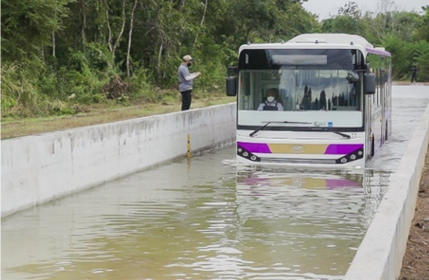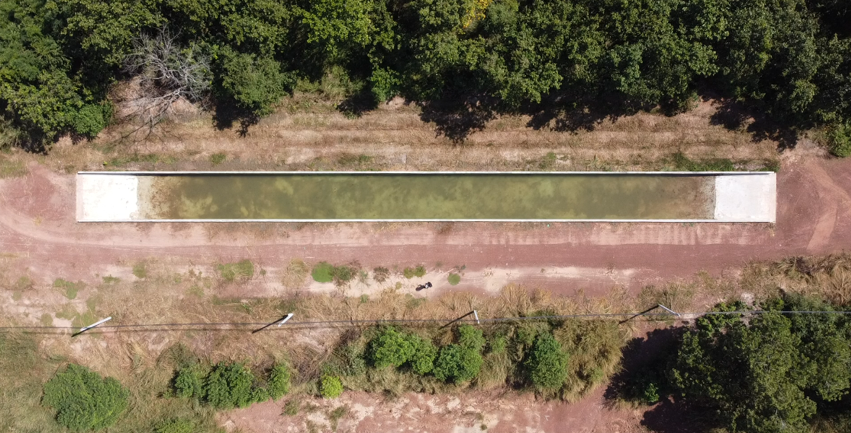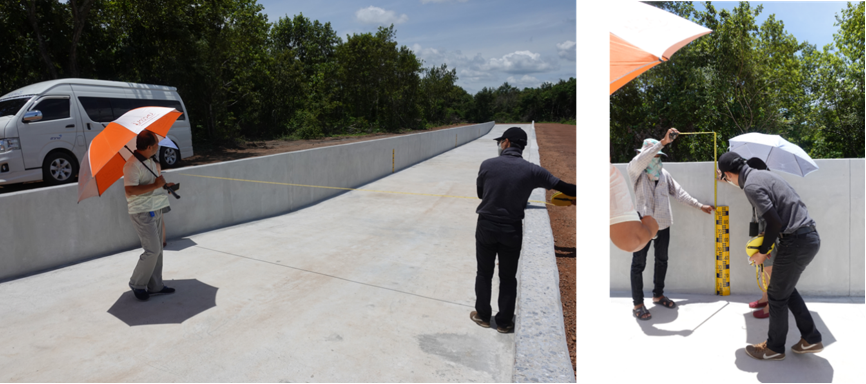
Water wading test track

Electric vehicles are rapidly entering the Thai market, following global trends. Consumer concerns about electric vehical safety, fueled by media reports of both domestic and international accidents, especially fires from the electric drive system, highlight the need for rigorous electrical safety testing.
Testing electric vehicles in flooded condition is crucial in Thailand, where heavy rain and flooding are common. However, there is currently no suitable testing facility for water wading tests of electric vehicles. To address this need, a research team has developed a test facility that simulates flooded conditions to meet the diverse requirements of vehicle types and water levels.

The development process included studying the requirements for the water wading test, considering international standards, market demands from vehicle manufacturers, flood conditions in Thailand and other countries, and collecting input from both researchers and end-users. The research team integrated these insights to design a testing facility that accommodates various vehicle types and provides accurate results, particularly in terms of ramp and U-turn. There is also a process for calculating engineering strength corresponding to the application.
The testing facility has undergone rigorous inspection and testing to ensure its reliability and effectiveness. This test facility has been certified for structural integrity by licensed professional engineers. It has been tested both during its construction phase according to international standards and in real-world conditions after its completion. Currently it is continuously used for commercial testing by both the research team as the original facility builders and by King Mongkut’s University of Technology North Bangkok as the area owner.

The testing facility can accommodate a wide range of vehicle types, from two-wheeled vehicles to large vehicles like buses up to 12 meters in length. It has a total length of 111.5 meters, with a maximum width of 25 meters. The flooded area has 50 meters long and can simulate water depths of up to 1 meter. Safety features, such as side observation and emergency response readiness, are also in place for observation and potential rescue operations during testing. Additionally, the facility includes a main electrical cabinet for recharging electric vehicles during testing.


In summary, this testing facility can simulate various flood conditions and is a valuable resource for electric vehicle safety testing in Thailand.
Research team
Dr.Chadchai Srisurangkul, Setthaluth Pangkreung, Foifon Srisawat, Manussanan Saengpenchai and Pichamol Thirasuppasri
